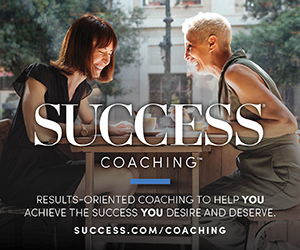In a matter of months, ChatGPT and other AI-based software have gone from relatively unheard of to a potential part of our everyday lives. They’re causing both concern and elation across multiple industries, including HR departments. Job applicants are sometimes proudly, sometimes secretly, using ChatGPT to create cover letters, resumes and even entire applications, and employers have something to say about it.
In one TikTok, “Career Coach Mandy” says she posted a position opening, and within about five minutes, an applicant responded who she called “really qualified.” Wondering how the applicant was able to check all the boxes for the position, Mandy decided to test something. She told ChatGPT to “write a cover letter based on the description,” and she was surprised with the advanced results she received. “Are you kidding me?” she says. “I ignored ChatGPT because I was like, uh, this is just some trend that I don’t understand… [but] it is writing a cover letter based on my job description.” Many of the commenters weighed in that she should hire that candidate, because clearly they are efficient and use their resources.
Surprisingly, it’s working. Resume Builder released a February survey showing that 78% of participants “got an interview after applying for a job using a resume and/or cover letter written by ChatGPT,” and 59% of participants got the job. In addition, 7 in 10 reported a higher response rate from companies than usual. However, not all HR teams are pro-ChatGPT. Of those 1,000 participants, 11% reported being denied a job when the interviewer “was aware they used ChatGPT to write their application materials.” This begs the question: We can use it, but should we?
HR leaders are skeptical about using ChatGPT for resumes
While some think using ChatGPT is working smarter, not harder, not everyone would agree. In fact, some leaders use a software to flag applicants who have created application materials with ChatGPT.
“ChatGPT and similar tools are for the most part, at best, a reflection of its users. If you don’t trust yourself enough to do the work, then you shouldn’t trust a machine either. It is a reflection of us,” says Kristy McCann Flynn, a veteran HR leader, and co-founder and CEO of the HR tech platform SkillCycle. “If we as humans do not have the skill base, nor will the technology. Our job is constant skilling, and when this occurs, AI and things like this are an enablement instead of a replacement.” Therefore, applicants should be aware that the act of using ChatGPT could make HR leaders and future employers wary of their ability to complete a strong resume on their own, a basic skill for employment.
Logan Mallory, VP of marketing at Motivosity, who works with his team on hiring and interviewing senior leadership and mentors job applicants on optimizing resumes, is also skeptical. “It’s capable of some pretty cool things. That being said, it shouldn’t be the be-all-end-all when it comes to resume writing,” he says. “If you create a ChatGPT resume and don’t have the stories, evidence from a prior role or personal connection to anything on that piece of paper, then it doesn’t matter how in-depth your resume was or how quickly it was written. You won’t make it through the whole interviewing process.” But, he adds that when he played with it to see how it would perform, he found a “decent format and a good starting point.”
And some think all resumes should be accepted
Some leaders see it as unethical to flag ChatGPT-generated resumes, such as Shayna Royal, director of recruiting and recruiting operations at Paycor. “I don’t think we have the ability to, nor should we, ban any kind of resume. If someone wishes to apply, that’s their choice and it’s up to us as subject matter experts to determine whether an interview should happen,” she says. “If a candidate wants to leverage AI to improve their application, the process itself will ultimately show whether it was worth it. That candidate has to choose whether that’s a risk they want to take or not.”
Job applicants are excited
Axel DeAngelis, who runs entrepreneurship blog and SEO content writing service Jumpcoast, did an experiment. He created different versions of his resume and cover letter, with and without ChatGPT, in his search for product manager jobs. First, he created a base version of the resume himself, then asked ChatGPT to rate the resume, explaining what would make it a “10/10”. After that, he implemented its recommendations, finalizing the resume until ChatGPT did in fact rate it a 10/10.
“From there, creating the cover letter was easy. I had ChatGPT write the first draft based on my resume and edited it from there with my personal experiences and anecdotes. I followed the same iterative process there too,” he says. “I found that GPT-4 was a lot better at this task. The ratings for each resume would vary between GPT-3.5 and GPT-4. Overall, GPT-4’s recommendations were a lot better, and given that it has a more robust dataset, I prioritized it in my testing.”
Another job applicant, an IT system administrator who wishes to remain anonymous, used an iOS app called “Chat AI: Ask & Write Anything.” They say, “It offered valuable suggestions for phrasing and keywords, which I found incredibly useful in making my application stand out. Additionally, I used the app to create a customized cover letter tailored to each position I applied for, ensuring that my application was relevant and engaging.” They added that it was a major time-saver with materials that were “polished and professional,” giving them more confidence. “I can say that AI is mind-blowing… I had a Zoom interview with [the employer] and it all went perfectly.”
Tips on using ChatGPT for resumes and cover letters
Have you decided using ChatGPT for your resume and cover letter is worth risking your application being flagged? Here’s what experts say to keep in mind:
Give your ChatGPT resume a personal touch.
Mallory says to provide work history, accomplishments and more so that it gives a template that works best for your needs. “Then, read it. Edit it. Make personalized adjustments. Don’t just take it fresh off the press and hand it to the nearest hiring manager. Make sure that the content you’re handing out is accurate, personal and uniquely yours,” he says.
Use it for your cover letter instead of your resume.
Matthew Warzel, president of resume writing and career coaching firm MJW Careers, LLC, writes in his blog that ChatGPT is more suited to cover letter writing than resumes. “Your resume is like a Lego set. Every build is different from the other sets. You are using the same blocks and colors as other sets, but each set comes with its own instructions, amounts of Lego block types and free reign as to how you want to tackle the build,” he writes. Instead, try it first with your cover letter. “I can see ChatGPT taking that over unless of course, you want to invest in having a more in-depth cover letter that maybe shows why you are a pain point resolver.”
Overall, the cover letter is a bit lower stakes than the resume. “Take the time to invest in your career. That includes your resume. This isn’t a willy-nilly piece of paper,” Warzel adds.
Your resume might look like others.
Finally, keep in mind 2,000 other applicants might be looking to ChatGPT too, making your resume less likely to stand out, Royal says.
ChatGPT doubts its own abilities with resumes.
Warzel jokes in his blog that when he asked ChatGPT “Why won’t ChatGPT takeover resume writing?,” the program itself doubted its abilities for three reasons, the first being: “Creating a good resume is not just about following a set of rules or templates. It requires understanding the job seeker’s specific skills, experience and career objectives, and presenting that information in a way that effectively highlights their strengths and accomplishments. This requires a level of personalization and nuance that an AI may not be able to fully capture.”
Photo by Prostock-studio/Shutterstock



